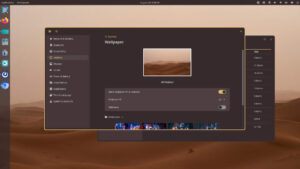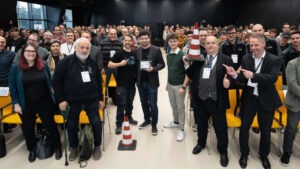 On Saturday the popular desktop environment GNOME turned eighteen. Always looking for an excuse for chocolate cake and ice cream, this is a birthday I celebrated, even though I’m not a user.
On Saturday the popular desktop environment GNOME turned eighteen. Always looking for an excuse for chocolate cake and ice cream, this is a birthday I celebrated, even though I’m not a user.
It’s hard to believe that GNOME is only eighteen, since it seems as if it’s been around forever.
Back in 2002, when I was new to Linux and giving everything Linux had to offer a test drive, I’d occasionally load-up the GNOME desktop on my Mandrake 9X machine and play with it for a while, but I much preferred the more configurable KDE. Just because I didn’t use GNOME as my desktop, however, didn’t mean that my computing experience wasn’t affected by it. It was there in some of the applications I used daily — the Bluefish text editor comes immediately to mind — which grew out of the GNOME project. And because open source tends to cross-pollinate, it has doubtlessly had a positive effect on the development of Xfce and Enlightenment, which are these days my desktops of choice.
GNOME was started by two young Mexican programmers, the whiz kid Miguel de Icaza, who had previously created the Midnight Commander file manager and had been an early contributor to WINE, and Federico Mena.
The project’s original purpose, in large part, was to keep free software free. KDE had begun development the previous year using Trolltech’s then proprietary Qt framework. GNOME was built using the GTK+ toolkit, which had been created for GIMP and was licensed under the GNU Lesser General Public License (LGPL). The GNOME desktop was released under the LGPL, with most of its applications licensed under the GPL, making GNOME and its apps totally free software.
From it’s initial release, many users liked GNOME’s dedication to simplicity and the popularity of the desktop soared during the first decade of the 21st century, making it the most popular — as in most used — Linux desktop by most accounts (with KDE a close second). Indeed, it seemed to be unstoppable until usage waned with the release of the completely redesigned GNOME 3 in 2011, which was not a big hit with much of its user base.
But even though use of GNOME as it’s shipped out-of-the-box began to decline somewhat with GNOME 3, it would be a mistake to think that the decline was anything but temporary in any real sense. User dissatisfaction with the new direction GNOME was taking led to several notable forks, creating new desktop projects using GNOME code with redesigned interfaces — most notably Unity, MATE, Cinnamon (which is no longer considered to be a GNOME fork) — and those forks introduced many new users to desktops that were essentially “GNOME Inside.”
In the long term, GNOME’s supposed “missteps” with GNOME 3 and the forks they inspired were good for the Linux ecosystem and have helped do away with the “cookie cutter” aspect to Linux distros. This has allowed distros such as Mint, Ubuntu and now Bodhi (with a fork of Enlightenment) to offer different and unique desktop experiences for their users. In addition, GNOME has been bringing some of it’s old users back to the fold with the inclusion of Classic Mode, introduced in 2013, which has a look and feel that harkens back to the glory days of GNOME 2.
Development of GNOME continues to roll merrily along, with the latest release (version 3.16, released in March) containing over 33,000 changes. It’s my guess that the project will be with us for many years to come and will continue to be a leader in the development of desktop technologies.
Happy birthday GNOME.
Help keep FOSS Force strong. If you like this article, become a subscriber.
Christine Hall has been a journalist since 1971. In 2001, she began writing a weekly consumer computer column and started covering Linux and FOSS in 2002 after making the switch to GNU/Linux. Follow her on Twitter: @BrideOfLinux







Personally, i like Gnome 3 minimalism. Long live the Gnome project!
Not a fan of Gnome.
I prefer something (anything really) more flexible.
Gnome 3 is the best thing that ever happened, gnome 2 was similar to windows so is KDE, XFCE,LXDE,KDE are so boring.